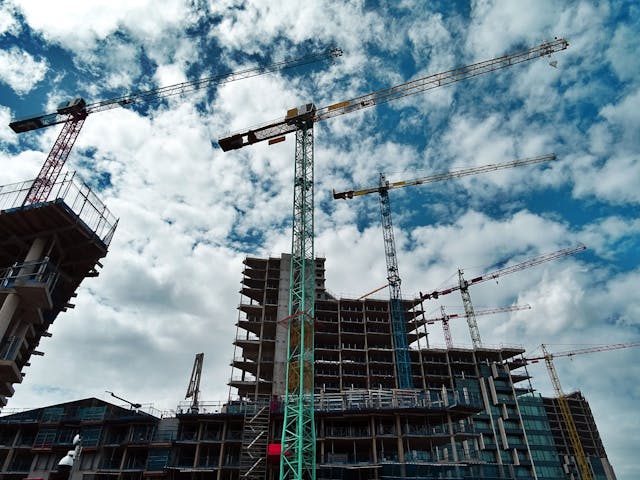Technology is changing everything and construction is no exception. In Australia the construction industry is a major contributor to economic growth, infrastructure and urban sprawl. With population growth and the demand for more residential and commercial space the need for efficient, sustainable and safe construction practices has never been more pressing. Technology has stepped in to answer these needs and is changing the way projects are designed, managed and built across the country. From design software to construction robots Australian builders and developers are embracing innovation to stay ahead of the game and meet the challenges of today.
Across cities and regions, advanced tools and digital systems are changing the way projects are delivered. For example builders Melbourne are using a combination of the latest technology to streamline, save costs and improve quality. Technology is not only helping them meet deadlines and navigate regulations but also to collaborate with stakeholders. As digital adoption grows, construction companies are finding the benefits of real-time data, automated machinery and predictive modelling which leads to better project outcomes and higher client satisfaction.
Building Information Modelling (BIM) and Digital Design
BIM (Building Information Modelling) is one of the most important technologies used in the Australian construction industry. Using BIM, architects, engineers and other construction staff are able to work together reviewing and updating a building’s virtual model. With BIM, 3D models may also contain time value (4D), budget information (5D) and even data for managing facilities (6D) throughout the whole project process.
In Australia, government regulations and major infrastructure projects are requiring BIM more and more, especially in the planning and design phases. This is resulting in more accurate cost estimation, reduced project risk and increased productivity. Architects and contractors can identify design clashes and fix them before construction starts, minimising delays and material waste. Clients and stakeholders get more transparency as BIM allows visualisation of the project at every stage. Digital twins – virtual replicas of buildings – take planning and maintenance to a whole new level, especially for large infrastructure projects.
Prefabrication and Modular Construction
Technology has also brought about prefabrication and modular construction. This means manufacturing components offsite in a controlled factory environment and assembling on site. It reduces construction time and improves quality control. More Australians are embracing modular construction since it is better for worker safety, results in lower costs and has a less harmful effect on the environment. With advances in technology for automation and accuracy, it became possible to make modules for buildings that matched the need. They are especially applicable in remote or regional parts of Australia where it is costly and logistically hard to transport materials and labour. Modular healthcare centres, schools and dwellings are now more prevalent through policies promoting innovation and sustainability. As the construction industry looks for ways to overcome labour shortages and rising material costs, prefabrication is the solution that ticks both economic and environmental boxes.
Construction Site Automation and Robotics
Automation is another area where technology is making big inroads in Australian construction. Robotics and automated machinery is making sites safer and more efficient. Robotic bricklayers, concrete printers and autonomous vehicles are being used to do the repetitive and physically demanding tasks. These machines not only reduce the risk of injury to human workers but also speed up the build.

Sustainable Construction and Environmental Technologies
Sustainability is on the agenda in Australian construction and technology is playing a big part in getting us there. Energy efficient systems, smart materials and environmentally conscious design principles are being incorporated into new builds. Solar panels, rainwater harvesting systems and advanced insulation materials are reducing a building’s carbon footprint.
Digital tools are also being used to do energy modelling and environmental impact assessments during the design phase so we can make more sustainable decisions. Green Star and NABERS ratings which rate the environmental performance of buildings are backed by data from smart sensors and automation systems. These are now standard for many commercial and public projects in Australia so developers are having to adopt technologies that reduce carbon emissions and promote energy efficiency.
Project Management Software and Digital Collaboration
Good project management is key to successful construction projects and digital tools have changed how we plan, track and deliver work. Cloud based platforms and mobile apps allow architects, contractors, engineers and clients to communicate seamlessly. These systems provide real time updates, track budget and schedule changes and share documents reducing errors and delays.
In Australia project management software is particularly useful for managing large infrastructure and urban development projects. Whether building highways, tunnels or high rise buildings digital collaboration platforms allow teams to work across different locations. Remote access to documents and virtual meetings mean decisions can be made quickly regardless of where team members are located.

Data analytics is another big feature of modern construction management. By analysing trends and performance data companies can forecast potential issues and optimise resource allocation. Artificial intelligence and machine learning algorithms are being added to these systems to provide predictive insights so managers can act before problems arise. These technologies are helping Australian construction companies deliver projects on time and budget and improve the final product.
As construction evolves in Australia technology is becoming more and more central. From design to delivery tech is changing the way we do things and setting new standards for efficiency, safety and sustainability. Whether it’s BIM, modular construction, robotics or digital project management technology is enabling the construction industry to meet the demands of modern development.









